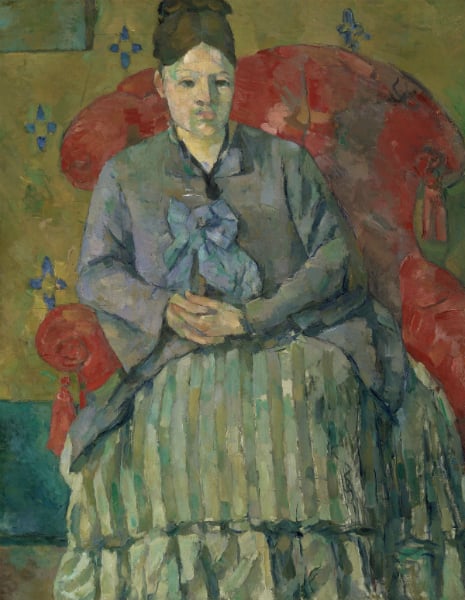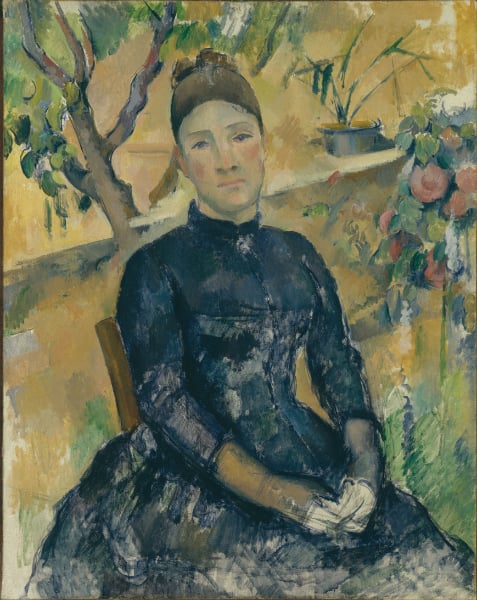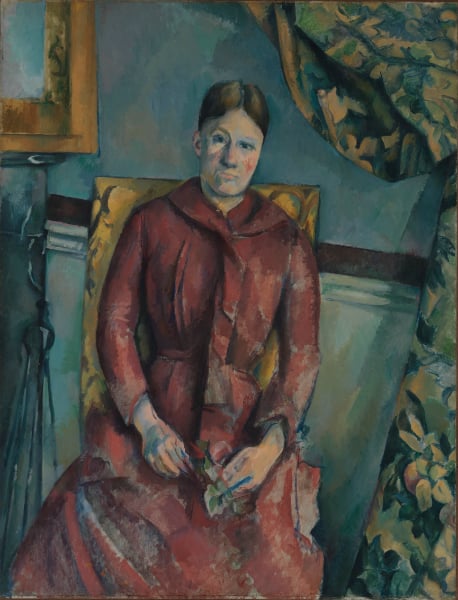Art & Exhibitions
Who Was Cézanne’s Enigmatic Wife?
The Met casts a new light on the once derided "sour-looking bitch."

Photo: Courtesy The Metropolitan Museum of Art
The Met casts a new light on the once derided "sour-looking bitch."

Lorena Muñoz-Alonso

The latest Paul Cézanne blockbuster opened its doors at the Metropolitan Museum of Art in New York yesterday, casting a new light on a little-known figure in the post-impressionist painter’s life: his wife.
“The portraits of Hortense Fiquet are crucial in the understanding of Cézanne’s figure paintings,” Dita Amory, curator of the exhibition “Madame Cézanne,” told artnet News. “His landscapes and still lives are perhaps what he is most well-known for, but his figure paintings, of which Fiquet’s are an essential part, are absolutely spellbinding and pivotal to his oeuvre.”
Fiquet first met Cézanne in 1869 at a Parisian art school, the Académie Suisse, where she started modeling for him. Their romantic relationship began a year later, and the couple had a child, Paul, in 1872. But their relationship was fraught, and by the time they got married in 1886—to ensure Paul’s inheritance—they had long been living apart. And yet, he kept painting her obsessively over the years, an enigma which has puzzled art historians for decades.
“Cézanne painted Fiquet more than any other model, or even himself,” Amory told artnet News. “And yet, she has not been well treated by history. It’s been long said that the portraits don’t show any emotional attachment, but I wanted to challenge that, because when you look at the paintings closely, you see it’s all there,” she continued.
“Madame Cézanne” brings together for the first time 24 of the 29 oil painting portraits that Cézanne made of Fiquet. Fifteen sketches, 3 watercolors, and 3 sketchbooks are also included in the exhibition, offering a panorama of their enduring artistic and personal relationship.

Paul Cézanne, Madame Cézanne in the Conservatory (1891)
Photo: Courtesy The Metropolitan Museum of Art
Besides her relationship to Cézanne and her seemingly unchanging physical appearance—all the works in the span of over two decades feature a stern-looking woman of unspecified age, with large eyes, tight lips, and hair invariably pulled back in bun—not much is known about Fiquet.
What we do know is that Cézanne went to great lengths to keep this relationship secret. A fact that, along her unremarkable appearance, turned Fiquet into a much-derided figure in the annals of art history, often deemed as an irrelevant and absent spouse. According to the Daily Beast, Roger Fry, an English art critic and Cézanne champion, wrote to a friend in a letter in 1925: “Perhaps that sour-looking bitch of a Madame counts for something in the tremendous repression that took place.”
But in 2009, Susan Sidlauskas’ widely-praised book Cézanne’s Other: The Portraits of Hortense kick-started a process of revaluation of Fiquet’s paramount role as muse. And the exhibition at the Met evidences a great understanding between painter and subject, with early portraits showing a more romantic and sensual disposition, and later ones more focused on repetitions and slight variations—Fiquet almost as a fetish, whose familiarity allowed the painter to explore new compositions and color nuances.
“What we learn from looking at this paintings is that Cézanne and Fiquet had very intense dynamic between them, even if their personal relationship wasn’t a conventional one,” Amory told artnet News. “She was his lifelong partner, they shared countless hours in the studio together. And this closeness allowed Cézanne to take his painting to new heights.”

Paul Cézanne, Madame Cézanne in a Red Dress (1888-90)
Photo: Courtesy The Metropolitan Museum of Art